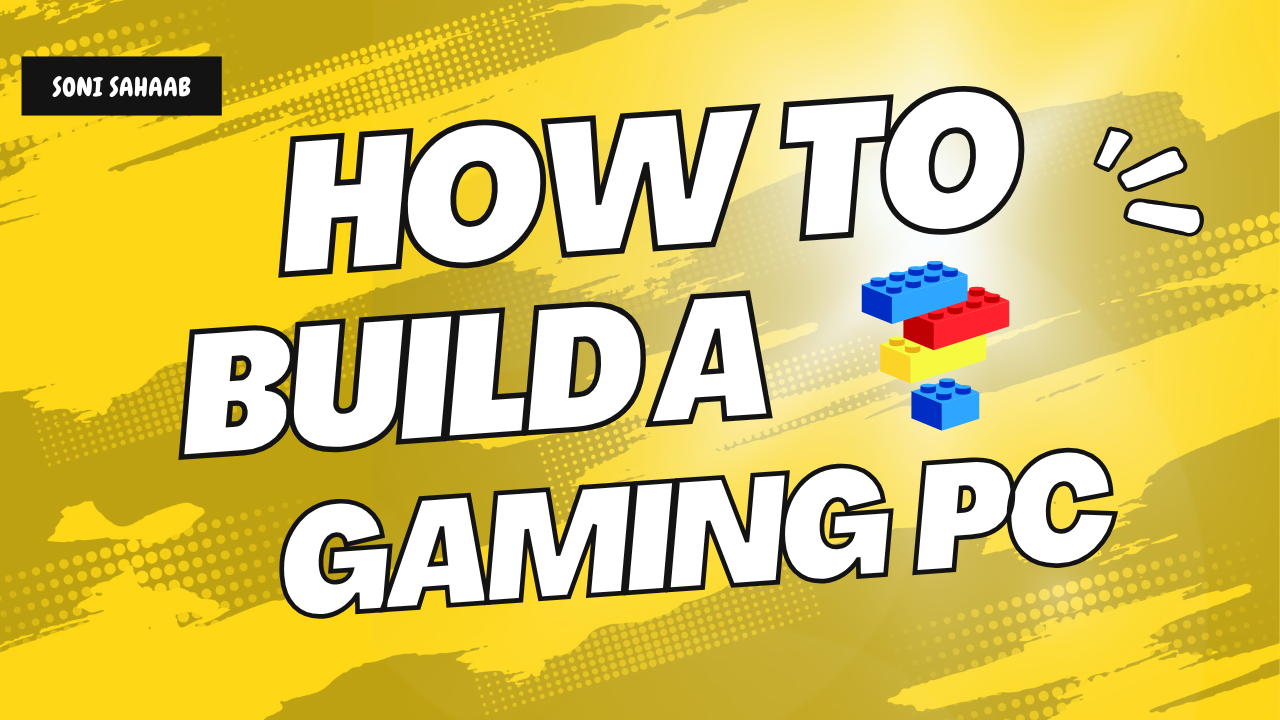Building a gaming PC can be an exciting yet daunting task, especially if you’re new to the world of custom computers. However, with the right guidance and knowledge, you can build a powerful gaming rig tailored to your needs. In this comprehensive guide, we’ll walk you through everything you need to know to build your own gaming PC in 2025, from choosing the right components to assembling them step by step.
Why Build Your Own Gaming PC?
Building your own gaming PC allows you to customize your hardware according to your preferences and budget. You can choose high-performance components that provide better gaming experiences than most pre-built systems. Additionally, building a PC is cost-effective in the long run, as you can upgrade parts individually instead of buying a completely new system.
1. Setting Your Budget
Before diving into the components, it’s crucial to set a budget. Gaming PCs can range from $800 for an entry-level build to over $3000 for high-end configurations. Determine your budget based on your gaming requirements, such as the type of games you play and the resolution you prefer (1080p, 1440p, or 4K).
2. Essential Components for a Gaming PC
To build a gaming PC, you need the following essential components:
a. CPU (Central Processing Unit)
The CPU is the brain of your computer, handling all the processing tasks. For gaming, a high-performance CPU is essential. In 2025, popular choices include the AMD Ryzen 7000 series and Intel 14th Gen processors. Look for at least 6 cores and 12 threads for smooth gaming performance.
b. GPU (Graphics Processing Unit)
The GPU is the most critical component for gaming. It handles rendering graphics and visuals. Nvidia’s RTX 40 series and AMD’s Radeon RX 7000 series are the top contenders this year. Choose a GPU that suits your gaming resolution and refresh rate requirements.
c. RAM (Memory)
For gaming, at least 16GB of RAM is recommended. However, 32GB is ideal for multitasking and future-proofing your build. Opt for DDR5 RAM for faster speeds and better performance.
d. Storage (SSD and HDD)
Fast storage reduces load times in games. An NVMe SSD is highly recommended for the operating system and games, while an HDD can be used for additional storage. Consider at least 1TB of SSD storage for gaming.
e. Motherboard
Choose a motherboard that is compatible with your CPU and supports your GPU, RAM, and storage requirements. Ensure it has enough expansion slots and connectivity options for future upgrades.
f. Power Supply Unit (PSU)
The PSU provides power to all components. Choose a high-quality PSU with enough wattage to support your build. Opt for at least an 80 Plus Bronze-rated PSU for better efficiency.
g. Case
The case houses all your components. Select a case with good airflow and enough space for your GPU and cooling solutions.
h. Cooling System
Proper cooling is essential for optimal performance. Choose a quality CPU cooler and ensure your case has enough fans for good airflow.
3. Assembling the Gaming PC
Once you’ve gathered all the components, it’s time to assemble your gaming PC.
Step 1: Prepare Your Workspace
Choose a clean, static-free workspace. Gather all necessary tools, including a screwdriver and thermal paste.
Step 2: Install the CPU
Carefully install the CPU onto the motherboard’s socket, aligning the notches. Apply thermal paste and attach the CPU cooler.
Step 3: Install RAM and Storage
Insert the RAM sticks into the motherboard’s memory slots. Install the NVMe SSD on the designated M.2 slot.
Step 4: Mount the Motherboard
Place the motherboard into the case and secure it with screws. Ensure proper alignment with the I/O shield.
Step 5: Install the GPU
Insert the GPU into the PCIe slot and secure it with screws. Connect the necessary power cables from the PSU.
Step 6: Connect Power Supply and Cables
Connect the PSU to the motherboard, GPU, storage devices, and other components. Organize cables neatly for better airflow.
Step 7: Boot and Install Operating System
Power on the system and enter the BIOS to check if all components are detected. Install the operating system (e.g., Windows 11) using a bootable USB drive.
4. Installing Drivers and Software
After installing the OS, update all drivers, including GPU, chipset, and audio drivers. Install essential software like antivirus, web browsers, and gaming platforms (e.g., Steam, Epic Games Store).
5. Optimizing and Testing Your Gaming PC
Optimize your system for the best gaming performance by updating drivers, tweaking BIOS settings, and adjusting graphics settings in games. Use benchmarking tools to test the stability and performance of your build.
6. Maintenance and Upgrades
Regular maintenance ensures the longevity of your gaming PC. Clean the dust from components and fans periodically. Upgrade components like RAM, storage, or GPU to keep up with future gaming requirements.
How to Improve Battery Life on Your Smartphone
Conclusion
Building a gaming PC in 2025 is a rewarding experience that allows you to create a powerful, customized rig. By following this comprehensive guide, you can confidently choose the right components, assemble them, and optimize your system for the best gaming performance. Happy gaming!


1 thought on “How to Build a Gaming PC: A Comprehensive 2025 Guide”